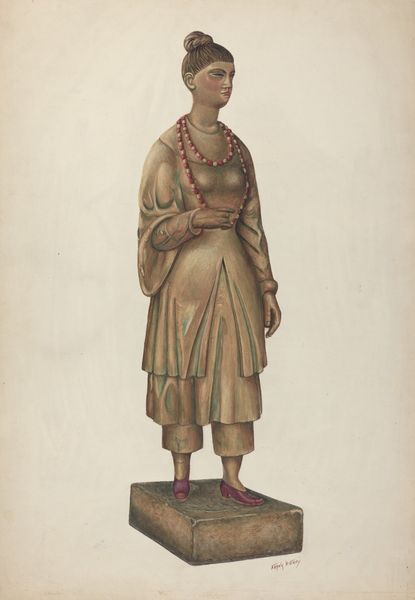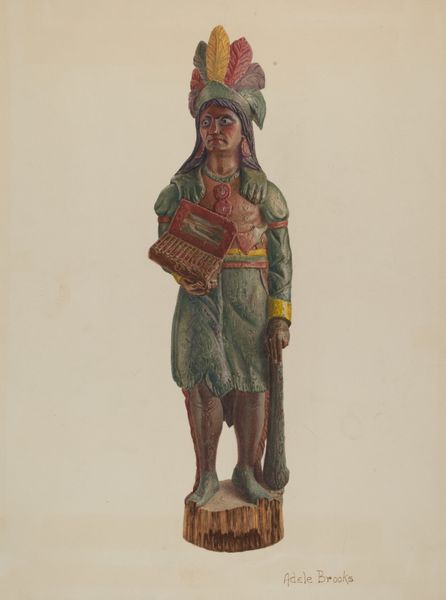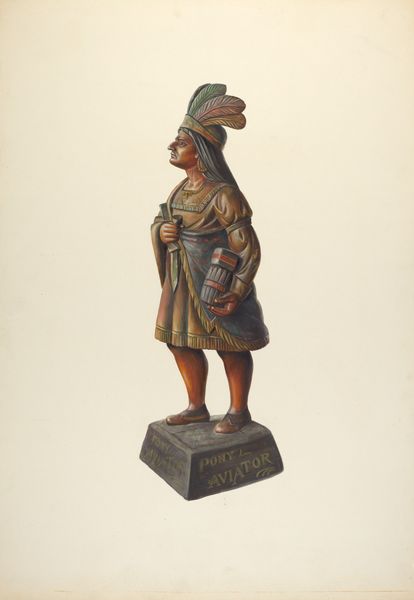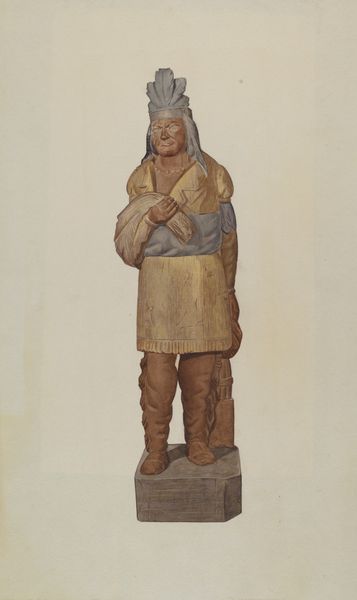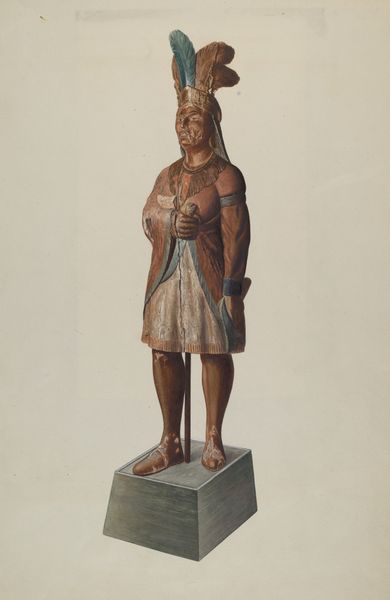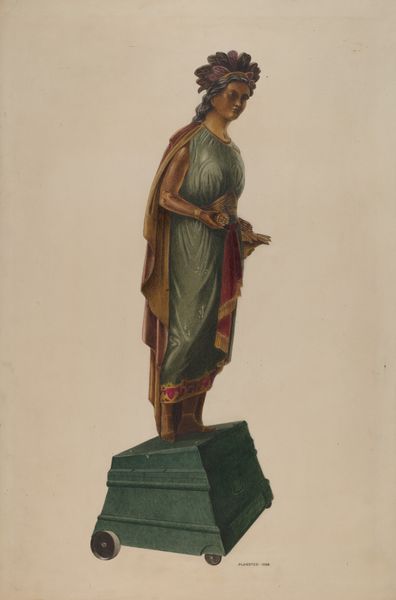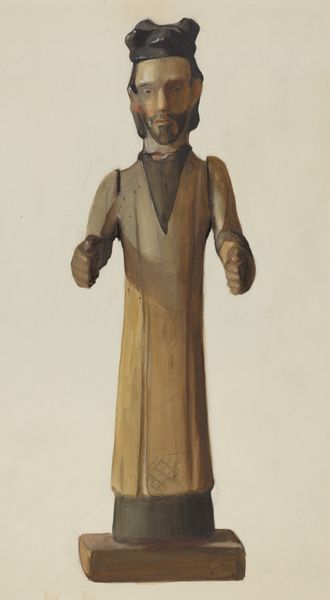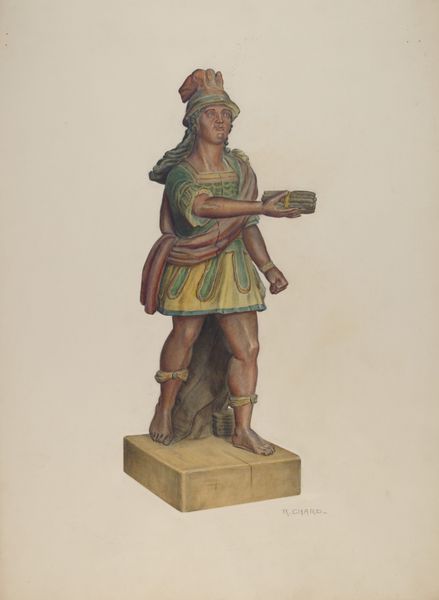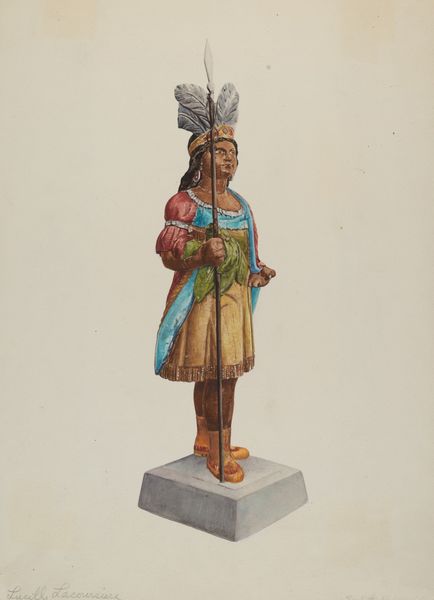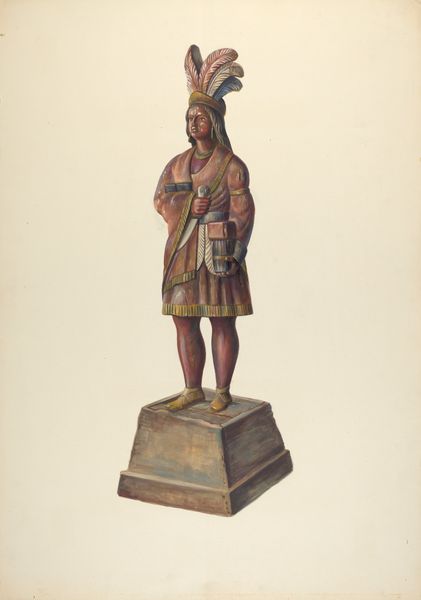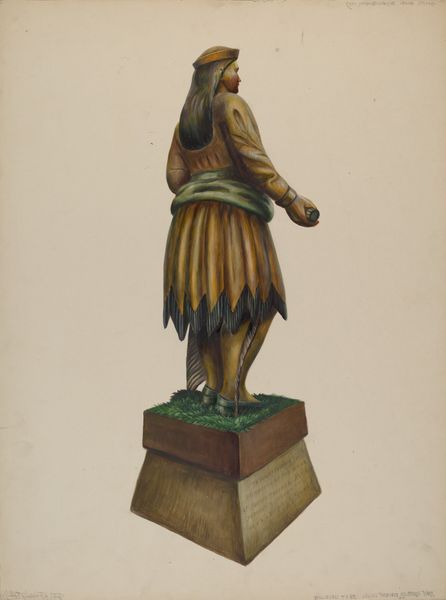
drawing, coloured-pencil, watercolor
#
portrait
#
drawing
#
coloured-pencil
#
charcoal drawing
#
figuration
#
watercolor
#
coloured pencil
#
miniature
#
realism
Dimensions: overall: 52.5 x 35.6 cm (20 11/16 x 14 in.)
Copyright: National Gallery of Art: CC0 1.0
Curator: Welcome. Before us, we have a drawing by Hardin Walsh titled "Cigar Store Figure," created around 1938. It’s rendered using colored pencil and watercolor. What's your first take on it? Editor: The sepia tones give it a rather antiquated, solemn feel, almost like an artifact unearthed from a forgotten era. The muted palette contrasts with the flamboyance typically associated with these figures, which were designed to be eye-catching advertisements. Curator: Indeed. Historically, cigar store figures, often depicting Indigenous people, stood as symbols of the tobacco trade. They emerged in the 19th century and became quite prevalent across America and Europe, essentially acting as silent salespeople. Walsh, however, rendered his figure on paper rather than carving a full-sized statue, changing its role within the social landscape. Editor: Which also speaks to questions of representation. How are Indigenous figures, or depictions inspired by them, being used in this period? Is Walsh's work interrogating the complex colonial history that these objects carry, or is he simply replicating a familiar image? What is being stated in a modern drawing that the three-dimensional carving of that time, for example, the work of Samuel Robb, did not? Curator: These are important points to consider. There's also the shift in function. Originally these were commercial symbols placed outside stores; now, situated within a museum, the figure's presence encourages scrutiny. How do we reconcile with these historical representations today? The placement within the museum world impacts the reception of such figures. Editor: It really forces us to consider the power of these images. And what stories they tell, or conceal, about the colonial exploitation. This is especially pertinent, I think, in an art world that is working to recognize a colonial inheritance in visual culture. Curator: Absolutely. Works such as Walsh's “Cigar Store Figure” invite reflection on the legacies of such forms in commercial spaces and highlight the nuanced ways in which historical contexts continue to shape our understanding. Editor: It provides a powerful conversation about historical memory, commodity culture, and, fundamentally, what gets remembered—and by whom. I am happy that we considered this piece. Thank you!
Comments
No comments
Be the first to comment and join the conversation on the ultimate creative platform.
